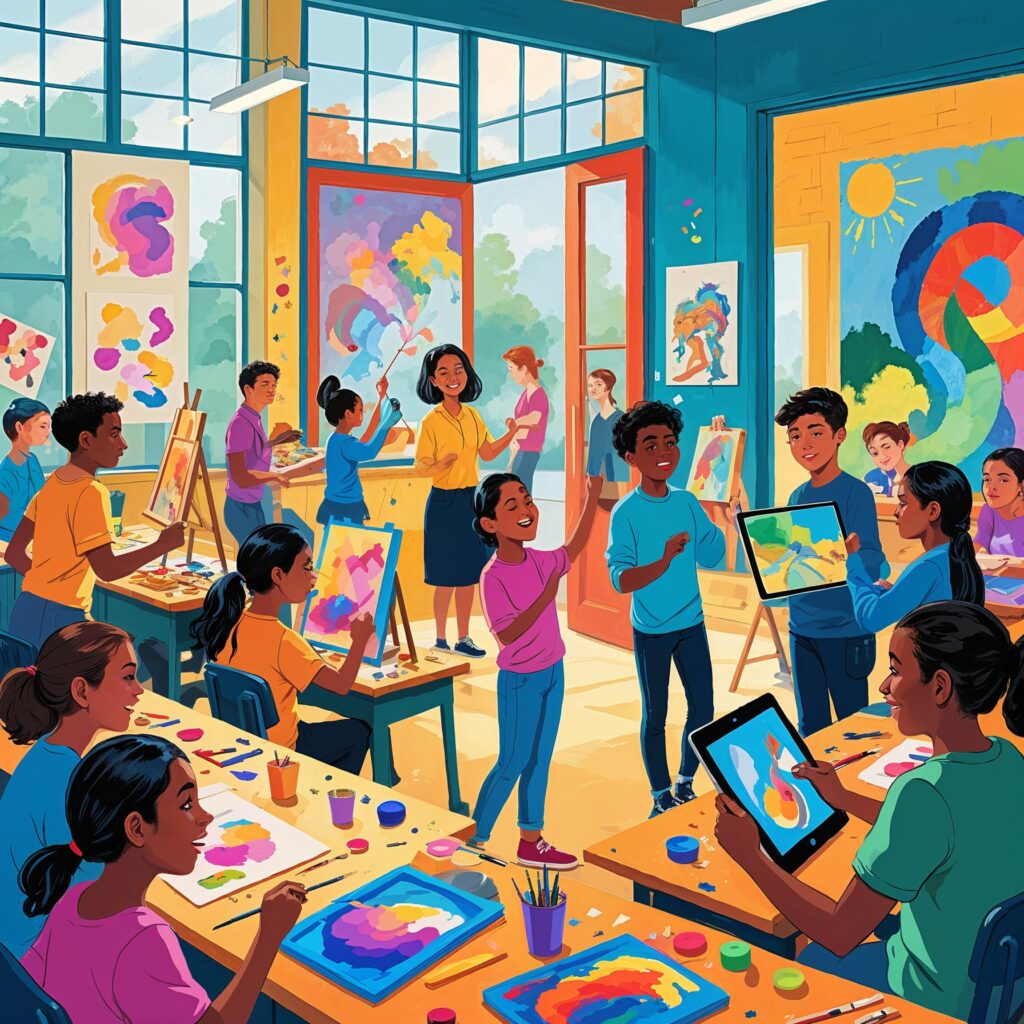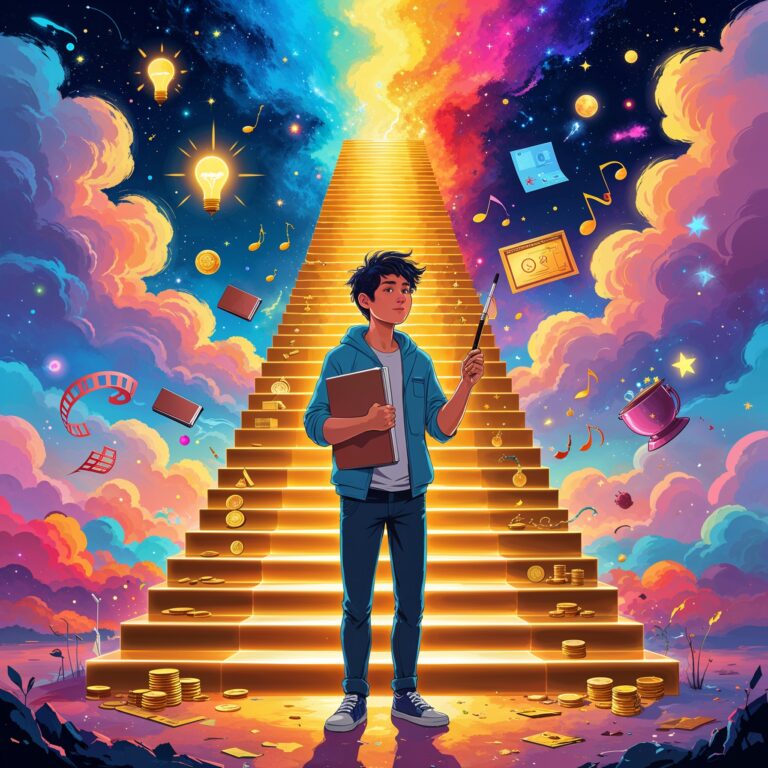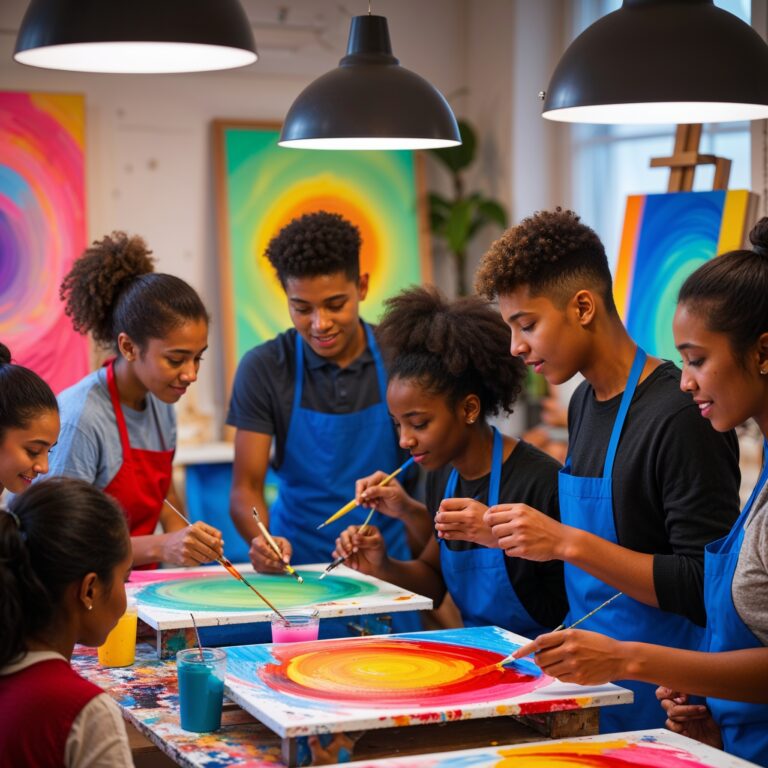Make Creative Opportunities Accessible for All
Creativity allows one to express oneself or even innovate, and it helps one grow as a person.
Many people are unable to access these opportunities due to finances, limited access to education, or other resources.
We at Create O’Rama are dedicated to providing everyone access to Creativity, not just people who can afford art lessons, musical training, and other classes. We aim to eradicate the boundaries and limitations that come alongside aspiring performers and open doors for the talent and skills they possess.
Let’s delve into these limitless approaches to helping promote aspiring performers and aiding them in every way possible together:
Table of Contents
1. Solving Economic Hurdles
Due to the high prices for supplies and equipment, streaming platforms and their advertising enable purchasing supplements, lessons, or other creative aids, which can be quite expensive. This tremendously restricts a person’s potential creative pursuits, leading to stagnation.
Approaches To Solve:
– Low-priced programs and free modules: Organizations should be set up to help fulfill the abovementioned criteria and provide these materials.
Scholarships and Essay Competitions: Setting up a charity that helps with financing, such as paying for classes or materials, is a very beneficial idea.
– Assisting with the Purchase of Essential Tasks: Drives aimed at helping purchase and donate kits and supplies for art classes, library lending programs, and esteemed community spaces offering free access to materials for creative people to encourage and help unlock the full potential.
When artistic expression is detached from the financial context, more individuals have the opportunity to realize their creative capabilities.
2. Providing More Inclusive Spaces
Equally important as accessing spaces is feeling welcomed in them. Many people, perhaps those from underrepresented groups, do not see their identity reflected in creative expression or do not feel accepted in standard artistic environments.
Solutions:
– Representation Changes: Actively promoting diversity within creative industries helps to make sure that other voices are incorporated.
Safe and Inclusive Spaces: Everyone should feel welcomed in any organization, regardless of their race, gender, ability, or background.
– Community Engagement: Instead of hosting events in central locations, bringing them to diverse neighborhoods opens accessibility for underserved communities.
The more Creativity is inclusive, the more people feel inspired to engage.
3. Providing Access to Arts Education

Creative education is not a luxury; while it may be categorized as such, it is required. Unfortunately, many schools are getting rid of art programs, meaning students have no opportunities to hone their skills.
Solutions:
– After-School Programs: Nonprofit organizations can offer free workshops for students to improve their creative skills.
Collaborate with Schools: Schools can partner with professional creative workers and artists to integrate arts education into their students’ learning programs.
Online Learning Platforms: Anyone with an Internet connection can now access educational courses, thanks to the availability of free or inexpensive online learning programs.
Providing an arts education allows future generations to express themselves creatively.
4. Leveraging Technology To Open Doors
The Internet has made creative outlets more easily accessible; however, not everyone has equal access to the Internet.
Solutions:
Community Tech Access: Public libraries and community centers can provide the Internet and creative software for those who do not have access to it at home.
Free Online Resources: Everyone can learn new creative skills from online platforms such as YouTube, Skillshare, and Coursera, which offer free lessons on everything from painting to film-making.
Virtual Mentorship: Distance is no longer a limitation when connecting aspiring creatives to industry professionals through the Internet.
When used wisely, technology can promote inclusion in the creative world.
5. Breaking the ‘Starving Artist’ Myth
Contrary to popular belief, the belief that artists do not make money is a myth. This sort of outdated, limited thinking leads people to stray from pursuing their passions.
Solutions:
Financial Literacy for Creatives involves teaching them how to properly market themselves, price their services, and obtain income through various means.
– Displaying Achievements: It is important to showcase artists, musicians, writers, and actors who have successfully built careers so that the stereotype is broken.
Promoting Creativity as a Business: Creativity is not only reserved for side hobbies but also for passion ventures. Guiding creatives to think like entrepreneurs make these dreams achievable in the long run.
Changing the narrative around careers in Creativity makes more people willing to pursue them.
6. Developing Effective Creative Communities

Creativity flourishes in the community. If people are more supported, they are more likely to take risks, collaborate, and grow in their skills.
Solutions:
– Creative Networking Functions: Bringing creatives together is useful for collaboration and creating new opportunities.
– Mentorship Schemes: Established professionals can mentor young creatives by helping them learn the art and encourage them to explore their imagination.
Digital Creative Platforms: Online communities help creatives showcase their work and receive constructive criticism, as well as search for opportunities farther away than their local area.
For a successful artistic future, a strong creative community is considered essential.
7. Foster Experimentation and Taking Risks
Notably, the absence of fear leads to greater Creativity. Fear of failure leads to avoiding new projects, weeding out judgment, or feeling as though one is “not good enough.”
Solutions:
Failure is Part of the Equation: Creatives are encouraged to take risks by being taught that mistakes are a guaranteed part of the process.
Low-Stakes Creative Challenges: ‘No-pressure’ art nights, jam sessions, and open mics allow people to shine and help them build confidence.
– Positive Reinforcement: Encouragement instead of criticism is constructive and promotes individual Creativity.
When it is safe for people to play, they uncover boundless possibilities awaiting their imagination!
FAQs
**Q:** What if I don’t consider myself creative?
**A:** Creativity exists within each of us! It can be showcased through painting, telling a tale, fixing issues, or creating music—countless forms exist.
**Q:** How can I help make creative opportunities more accessible?
**A:** Assist local creators, donate materials, volunteer for arts programs, or consider mentorship for aspiring artists!
**Q:** What’s the first step to starting a creative field?
**A:** Jet going! You could take an online class, join a community, or try different outlets till you find one that excites you.
—



